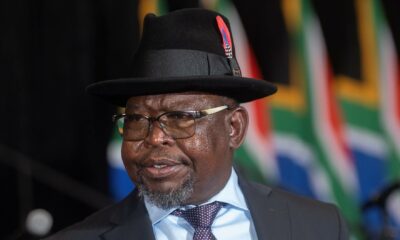Business
Rand Breaks the R17 Mark as Positive Budget Momentum Lifts Investor Confidence

A currency comeback that caught attention
South Africans woke up on Thursday to a rare piece of financial good news. The rand had finally cracked a level many thought was out of reach, dipping to R16.99 to the dollar. It is the strongest the currency has been since early 2023, and it is a moment that immediately sparked conversation across trading floors, boardrooms, and social media timelines.
The timing was no coincidence. Investors were still digesting the Medium Term Budget delivered the day before, a statement many analysts described as credible, focused, and surprisingly disciplined. For a country that has been battered by slow growth, rising debt, and jittery markets, even a small show of confidence can move mountains. In this case, it moved the currency.
Why the rand suddenly has a tailwind
Analysts pointed to two main forces working in South Africa’s favour. The first was the international landscape. A weaker United States dollar helped lift emerging market currencies across the board. The second was more homegrown. The budget’s commitment to stabilising debt and its focus on economic reform gave investors a reason to take another look at the country’s prospects.
Senior analyst Shaun Murison at Rand Swiss added fuel to the optimism by noting market speculation that S&P Global could upgrade South Africa’s credit rating in its review scheduled for Friday. The possibility of an upgrade, even a small one, often sends strong signals to global investors. It suggests a country is heading in the right direction and is worth their money and attention.
A country still in junk status but edging forward
South Africa remains in sub-investment grade with a BB minus rating from both S&P and Fitch. That position has weighed heavily on the economy for years. Yet there has been a shift in tone from rating agencies. S&P gave the country a positive outlook in November 2024, meaning it believed South Africa had a chance of climbing out of junk if reforms continued and growth improved.
Economists say the groundwork is now more visible. S&P expects average growth of 1.5 percent between 2025 and 2028, while Investec forecasts 1.7 percent over the same period. These figures are modest but represent a clear improvement over 2024. Much of this optimism is tied to progress in resolving the domestic freight and logistics crisis, a long-standing drag on economic performance.

Image 1: Business Tech
Momentum that could reshape expectations
Credit rating agencies seldom leave outlooks unchanged for too long. They typically shift a rating or return it to neutral within eighteen months. With debt projections looking more manageable and growth expected to pick up, economists believe South Africa is approaching a crucial moment. If S&P sees enough progress, it could trigger the first outlook-related rating adjustment in years.
That is why Thursday’s move below R17 felt significant. It was more than a blip on a currency chart. It symbolised a broader sense that the country’s policies may finally be gaining traction. On social media, South Africans celebrated the win cautiously, noting that a stronger rand can ease the cost of imports, reduce inflation pressure, and help households breathe a little easier. Others remained pragmatic, saying the momentum must be sustained through real reforms, not temporary sentiment.
What happens next
For now, the market is watching Friday’s S&P Preview closely. If confidence continues to build, analysts believe the rand could test R16.80 in the short term. That would take South Africa back to levels last seen before major global disruptions and domestic crises knocked the currency off course.
The day the rand broke R17 was a reminder that even in a tough economic climate, change is possible when the right signals meet the right moment. Whether this becomes the start of a more stable chapter depends on what the next round of reforms delivers and how consistently the government follows through.
Also read: South Africa Officially Lowers Its Inflation Target to 3%: Here’s What It Means
Follow Joburg ETC on Facebook, Twitter, TikT
For more News in Johannesburg, visit joburgetc.com
Source: Business Tech
Featured Image: Moneyweb

















